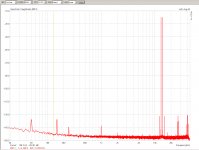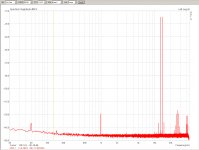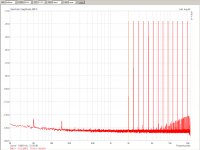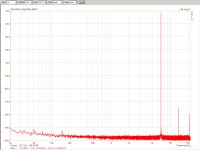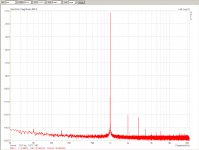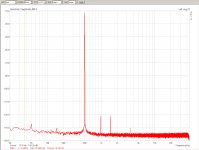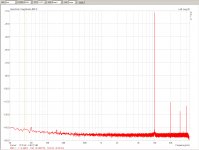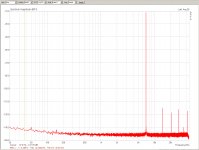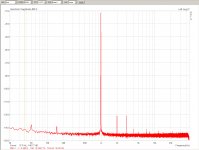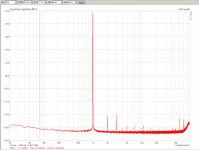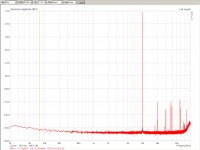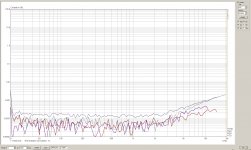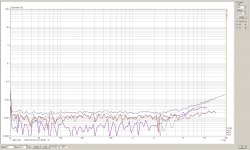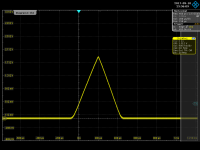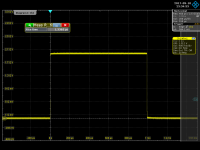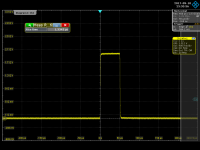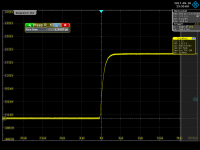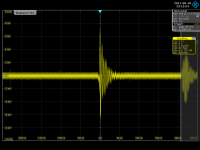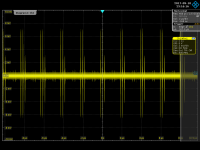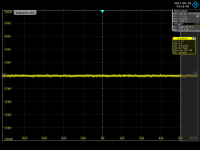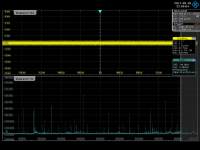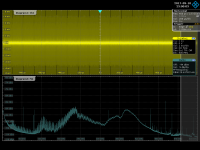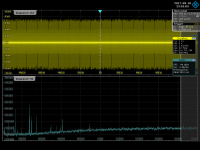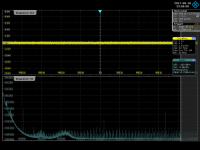44kHz measurements
...turned on without problem the module. Attached at once the usb converter,
and I'm feeding it with the power bank.
PS supplies are +- 5V down to mV precision.
Output offset is .1mV both channels. (it's more the error of the multimeter)
Gain=2
Vpp out = 8V before clipping, with no load (10kohm of soundcard)
A bit below with 390 ohm load.
So, here there are the distortion tests made with the EMU1616m (mod)
soundcard, at a level of ~<10db, (!1Vrms input, 2Vrms out) at the point
where output clipping distrotion has just disappeared
I did at 44khz for lowering the residual distortion of the soundcard.
Your unit measures very much into the distortion floor of my soundcard.
The values a tiny bit higher that the best residual level of the card.
It's only visible at higher freqencies, like at 10kHz and IMD where it is
perceivably higher, but still very small and very clean for your module.
...turned on without problem the module. Attached at once the usb converter,
and I'm feeding it with the power bank.
PS supplies are +- 5V down to mV precision.
Output offset is .1mV both channels. (it's more the error of the multimeter)
Gain=2
Vpp out = 8V before clipping, with no load (10kohm of soundcard)
A bit below with 390 ohm load.
So, here there are the distortion tests made with the EMU1616m (mod)
soundcard, at a level of ~<10db, (!1Vrms input, 2Vrms out) at the point
where output clipping distrotion has just disappeared
I did at 44khz for lowering the residual distortion of the soundcard.
Your unit measures very much into the distortion floor of my soundcard.
The values a tiny bit higher that the best residual level of the card.
It's only visible at higher freqencies, like at 10kHz and IMD where it is
perceivably higher, but still very small and very clean for your module.
Attachments
-
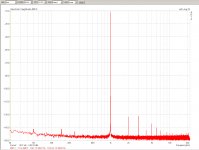 OL_HD_1khz_-11db_2.5Vrms_10kohmload_44kHzsampl_real1k.jpg426.6 KB · Views: 462
OL_HD_1khz_-11db_2.5Vrms_10kohmload_44kHzsampl_real1k.jpg426.6 KB · Views: 462 -
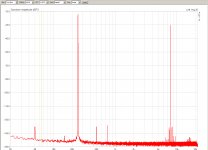 OL_HD_SMPTE_IMD_-12db_2Vrms_10kohmload_44kHzsampl_crippled.jpg410.9 KB · Views: 207
OL_HD_SMPTE_IMD_-12db_2Vrms_10kohmload_44kHzsampl_crippled.jpg410.9 KB · Views: 207 -
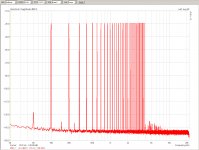 OL_HD_MULT_ITU_-8db_2Vrms_10kohmload_44kHzsampl.jpg510.8 KB · Views: 190
OL_HD_MULT_ITU_-8db_2Vrms_10kohmload_44kHzsampl.jpg510.8 KB · Views: 190 -
 OL_HD_MULT_High_-10db_2Vrms_10kohmload_44kHzsampl.jpg475.4 KB · Views: 400
OL_HD_MULT_High_-10db_2Vrms_10kohmload_44kHzsampl.jpg475.4 KB · Views: 400 -
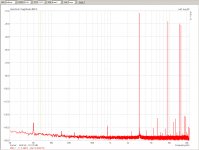 OL_HD_MULT_DIM_-10db_2Vrms_10kohmload_44kHzsampl.jpg441.6 KB · Views: 434
OL_HD_MULT_DIM_-10db_2Vrms_10kohmload_44kHzsampl.jpg441.6 KB · Views: 434 -
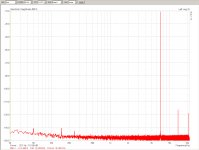 OL_HD_7khz_-11db_2Vrms_10kohmload_44kHzsampl.jpg431.7 KB · Views: 450
OL_HD_7khz_-11db_2Vrms_10kohmload_44kHzsampl.jpg431.7 KB · Views: 450 -
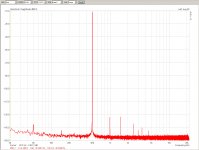 OL_HD_1khz_-11db_2Vrms_10kohmload_44kHzsampl_r.jpg434.7 KB · Views: 466
OL_HD_1khz_-11db_2Vrms_10kohmload_44kHzsampl_r.jpg434.7 KB · Views: 466
88kHz measurements
Here are the 88kHz tests. You can see better the high freq. behavior and,
because the module's distortion is a tiny bit higher than the sound card
baseline, so I could repeat the tests at 88khz with basically the same
results, same distortion values.
Here are the 88kHz tests. You can see better the high freq. behavior and,
because the module's distortion is a tiny bit higher than the sound card
baseline, so I could repeat the tests at 88khz with basically the same
results, same distortion values.
Attachments
-
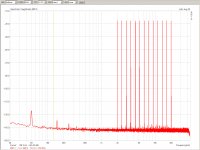 OL_HD_MULT_High_-10db_2Vrms_10kohmload_88kHzsampl.jpg478.3 KB · Views: 161
OL_HD_MULT_High_-10db_2Vrms_10kohmload_88kHzsampl.jpg478.3 KB · Views: 161 -
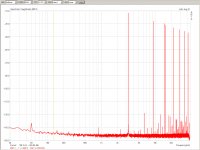 OL_HD_MULT_DIM_-11db_2Vrms_390ohmload_88kHzsampl.jpg480 KB · Views: 160
OL_HD_MULT_DIM_-11db_2Vrms_390ohmload_88kHzsampl.jpg480 KB · Views: 160 -
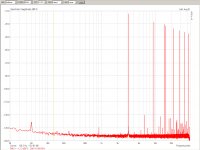 OL_HD_DIM_-12db_2Vrms_10kohmload_88kHzsampl.jpg480.3 KB · Views: 158
OL_HD_DIM_-12db_2Vrms_10kohmload_88kHzsampl.jpg480.3 KB · Views: 158 -
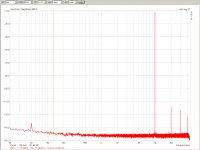 OL_HD_10khz_-11db_2Vrms_390ohmload_88kHzsampl.jpg436.4 KB · Views: 146
OL_HD_10khz_-11db_2Vrms_390ohmload_88kHzsampl.jpg436.4 KB · Views: 146 -
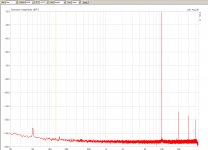 OL_HD_10khz_-11db_2Vrms_10kohmload_88kHzsampl_crippled.jpg402.1 KB · Views: 140
OL_HD_10khz_-11db_2Vrms_10kohmload_88kHzsampl_crippled.jpg402.1 KB · Views: 140 -
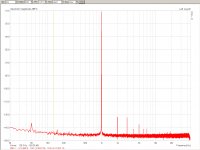 OL_HD_1khz_-11db_2Vrms_390ohm-load_88kHzsampl.jpg442.2 KB · Views: 150
OL_HD_1khz_-11db_2Vrms_390ohm-load_88kHzsampl.jpg442.2 KB · Views: 150 -
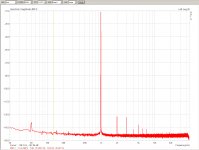 OL_HD_1khz_-11db_2Vrms_10kohmload_88kHzsampl.jpg440.9 KB · Views: 162
OL_HD_1khz_-11db_2Vrms_10kohmload_88kHzsampl.jpg440.9 KB · Views: 162
36 Ohm load
So here they are the measurements with 36 ohm (sorry, I had this one at hand, no 32 ohm all over the place..)
Here one start to see the effects. Still very very good.
First, the usual 44khz group
So here they are the measurements with 36 ohm (sorry, I had this one at hand, no 32 ohm all over the place..)
Here one start to see the effects. Still very very good.
First, the usual 44khz group
Attachments
36 Ohm load (88kHz)
This is the group of 88khz sampling, single tone measurements
This is the group of 88khz sampling, single tone measurements
Attachments
88kHz multitone tests
This is the group of multitone tests.
The 'highcap-bank' note wanted to denote the use of a 10000mAh power bank,
instead of the small one generally used. Wanted to see if there is a
difference, depending on the source internal impedance (before the dc-dc
converters)
This is the group of multitone tests.
The 'highcap-bank' note wanted to denote the use of a 10000mAh power bank,
instead of the small one generally used. Wanted to see if there is a
difference, depending on the source internal impedance (before the dc-dc
converters)
Attachments
-
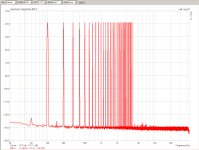 OL_HD_MULT_ITU_-7db_2.1Vrms_36ohmload_88kHzsampl.jpg509.6 KB · Views: 142
OL_HD_MULT_ITU_-7db_2.1Vrms_36ohmload_88kHzsampl.jpg509.6 KB · Views: 142 -
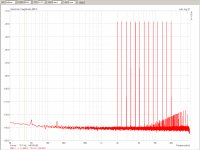 OL_HD_MULT_High_-11db_2.1Vrms_36ohmload_88kHzsampl.jpg485.4 KB · Views: 145
OL_HD_MULT_High_-11db_2.1Vrms_36ohmload_88kHzsampl.jpg485.4 KB · Views: 145 -
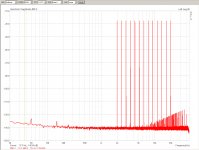 OL_HD_MULT_High_-10db_2.1Vrms_36ohmload_88kHzsampl_highcap_bank.jpg478.1 KB · Views: 150
OL_HD_MULT_High_-10db_2.1Vrms_36ohmload_88kHzsampl_highcap_bank.jpg478.1 KB · Views: 150 -
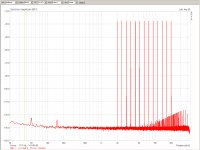 OL_HD_MULT_High_-10db_2.1Vrms_36ohmload_88kHzsampl.jpg484.4 KB · Views: 147
OL_HD_MULT_High_-10db_2.1Vrms_36ohmload_88kHzsampl.jpg484.4 KB · Views: 147 -
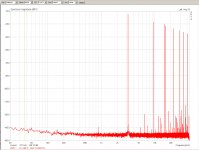 OL_HD_MULT_DIM_-12db_2.1Vrms_36ohmload_88kHzsampl.jpg484 KB · Views: 155
OL_HD_MULT_DIM_-12db_2.1Vrms_36ohmload_88kHzsampl.jpg484 KB · Views: 155 -
 OL_HD_IMD_-12db_2.1Vrms_36ohmload_88kHzsampl.jpg464.7 KB · Views: 147
OL_HD_IMD_-12db_2.1Vrms_36ohmload_88kHzsampl.jpg464.7 KB · Views: 147
Distortion vs. Frequency
Finally, the distortion vs. frequency scans, they are two because the
first is an intermediate value, not at the usual 2.1V rms output level. I
still have to see, but it was at like half magnitude of that, 1.1V rms.
The file signed with +4db is the real max output level, 2.1Vrms.
Then I had included the distortion plots made at max sample rate, just to
see if there is any 'intrusors' at the higher frequency range, like
because of the switching PS noise mixing down.
No such sign of any deviations, all normal usual soundcard scene.
Finally, the distortion vs. frequency scans, they are two because the
first is an intermediate value, not at the usual 2.1V rms output level. I
still have to see, but it was at like half magnitude of that, 1.1V rms.
The file signed with +4db is the real max output level, 2.1Vrms.
Then I had included the distortion plots made at max sample rate, just to
see if there is any 'intrusors' at the higher frequency range, like
because of the switching PS noise mixing down.
No such sign of any deviations, all normal usual soundcard scene.
Attachments
Oscilloscope shots
Here you are, the transient behavior of the unit, tested with square wave
signal and triangular -- for clean show of clipping.
The test load was the scope's 50 Ohm termination itself, So did not have to
bother with termination problems and reflections (ok, not a prob. at these
frequencies)
Here you are, the transient behavior of the unit, tested with square wave
signal and triangular -- for clean show of clipping.
The test load was the scope's 50 Ohm termination itself, So did not have to
bother with termination problems and reflections (ok, not a prob. at these
frequencies)
Attachments
Switching noise
Then, I had a second look at the switching noise again.
This time I found out that it does not disappear -- after some poking I
had realized that in practice it had never gone away: only with my old
analog scope beauty it has decreased level and glitch narrowness that the
scope got into triggering difficulties and so did not show on screen a
stable pic of the noise signal. So it seemed decreased.
So, this scope is a beast and cannot be let down so easily.
So the basic - constant response what I got is something like this:
(First pic in attach)
the second attach is the zoomed version showing the very narrow spike
All this really goes away if I set the scope input filter to 20MHz
(third attach)
Then, I had a second look at the switching noise again.
This time I found out that it does not disappear -- after some poking I
had realized that in practice it had never gone away: only with my old
analog scope beauty it has decreased level and glitch narrowness that the
scope got into triggering difficulties and so did not show on screen a
stable pic of the noise signal. So it seemed decreased.
So, this scope is a beast and cannot be let down so easily.
So the basic - constant response what I got is something like this:
(First pic in attach)
the second attach is the zoomed version showing the very narrow spike
All this really goes away if I set the scope input filter to 20MHz
(third attach)
Attachments
Oscilloscope shots and FFT analysis
Ok, previously I have shown the noise signal in time. How does it look
like in the frequency domain?
First attach here is the scope and setup noise baseline, that is,
everything connected but the headamp not powered up.
Second attach is the head amp powered up
Third one is the same but low frequency zoom in
Fourth is with 20MHz filter activated
Conclusion: as you can see the narrow pulse series yields a spectral
distribution which is peaking at about 400MHz.
At around and below 20MHz there is very small amount of noise signal
energy accumulated, so a 20MHZ highpass filter removes most of the noise.
But: all this perturbation is a result of picking up the radiated EMI
fields. So it will go into everything, like into the level control
potentiometer, or the input cabling itself.
So it's not a very good thing, because then it gets into the amplification
chain itself, and could cause problems.
Mind You, in the previous distortion measurements it did not cause major
deviations..
What I noted is that 'fingering' the metal shields of the DCDC converters
is decreasing the picked up signal. And it's not a grounding effect. Not
only. an isolated water bag does similar effect.
It is the RF absorbing / damping effect that is at work.
So my conclusion is that maybe, very probably some RF absorber ferrite
doped sheet, ERS Clothe, things like that could be a positive cure...
Ok, previously I have shown the noise signal in time. How does it look
like in the frequency domain?
First attach here is the scope and setup noise baseline, that is,
everything connected but the headamp not powered up.
Second attach is the head amp powered up
Third one is the same but low frequency zoom in
Fourth is with 20MHz filter activated
Conclusion: as you can see the narrow pulse series yields a spectral
distribution which is peaking at about 400MHz.
At around and below 20MHz there is very small amount of noise signal
energy accumulated, so a 20MHZ highpass filter removes most of the noise.
But: all this perturbation is a result of picking up the radiated EMI
fields. So it will go into everything, like into the level control
potentiometer, or the input cabling itself.
So it's not a very good thing, because then it gets into the amplification
chain itself, and could cause problems.
Mind You, in the previous distortion measurements it did not cause major
deviations..
What I noted is that 'fingering' the metal shields of the DCDC converters
is decreasing the picked up signal. And it's not a grounding effect. Not
only. an isolated water bag does similar effect.
It is the RF absorbing / damping effect that is at work.
So my conclusion is that maybe, very probably some RF absorber ferrite
doped sheet, ERS Clothe, things like that could be a positive cure...
Attachments
I should add that we also had a lengthy discussion via e-mail on the HF noise absorbing material selection but haven't tried it.
Regards,
Oleg
Regards,
Oleg
And I should add, that is, repeat again: this unit not only measures excellent but also sounds excellent!
Thank you, Oleg, for the adventure!
Thank you, Oleg, for the adventure!
It is an EMU1616m, but not in factory original status. Modified by me. Very similar performance to my RTX6001. At that time I did not have the RTX, yet.
Ciao, George
Ciao, George
Any impedance or PSRR measurements for the linear regulator version, not the one using DC-DC input stage?
Unfortunately not but I would expect PSRR and noise performance similar to that of the TPS7A30-49EVM-567 evaluation board. As for the output impedance so far I haven't seen any measurements of these regs.
I’ve been following the thread "New Audio Op Amp - OPA1622" for a while and at some point decided to make myself a new universal buffer/headamp based on the OPA1622. The idea is to use it as an output buffer for my standalone volume controller/source selector with the direct headphones drive capability. Since I already had the low noise PSU board design based on the TPS7A3001/TPS7A4901 complementary regulators I just added the buffer part to it and it seems to look good together. I also added the transformer CRC snubber to the board following the guidance in the "Simple...
- Home
- Amplifiers
- Headphone Systems
- Universal buffer/headamp based on OPA1622
